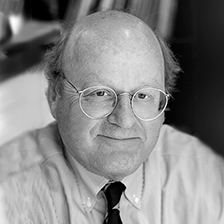History and Leadership
HBRA Architects was founded in 1961 by James Wright Hammond, who conceived of the practice as an opportunity to reach clients in a personal manner and to interpret their needs and desires through direct participation in all phases of the design and construction process. Thomas Beeby resigned from a large firm to join Hammond in the creation of a smaller, more interactive office capable of addressing a wide range of project types and scope. Directors Michele Silvetti-Schmitt and William Kinane continue this tradition, sharing the belief that collaborative engagement between client and architect produce the finest buildings.
HBRA has maintained its offices in Chicago since its founding. In an attempt to bring the sophistication of a large firm to a more personal manner of practice, the firm designs buildings for a range of purposes and scales; these include museums, performing arts centers, libraries, academic buildings, religious buildings, residences, office buildings, urban and campus master plans, and renovations of historic buildings. We are recognized for designing projects that require sensitivity to existing contexts, as well as an ability to translate design challenges at any scale into meaningful and enduring structures that are responsive to client needs and specific site conditions.
Thomas H. Beeby

Thomas Beeby joined James Hammond in 1971. In 1972 the firm became Hammond Beeby and Associates. Over thirty-nine years, during most of which time he served as the firm's Director of Design, Mr. Beeby oversaw the design of a range of projects that includes museums, libraries, university buildings, theater and performing arts centers, urban and campus master plans, high-rise and suburban office buildings, renovations of historic structures, religious buildings, retail projects, housing developments, and private residences.
Mr. Beeby is the 2013 Driehaus Award recipient presented through the University of Notre Dame. This award recognizes lifetime contributions to traditional, Classical, and sustainable architecture in the modern world. Mr. Beeby was Dean of the Yale University School of Architecture from 1985 to 1991, and later served as Adjunct Professor of Architecture. He was Director of the School of Architecture at the University of Illinois at Chicago from 1980 to 1985, and Associate Professor at the Illinois Institute of Technology from 1978 to 1980. Mr. Beeby lectures widely and has been lecturer or jury critic at Columbia University, Cornell University, Harvard University, Princeton University, Rice University, the University of California at Los Angeles, the University of Chicago, the University of Michigan, and the University of Virginia. He has participated in numerous symposia including the Smithsonian Institution, the Walker Art Center, the Museum of Modern Art, the Cooper-Hewitt Museum, the Art Institute of Chicago, the Museum of Contemporary Art in Chicago, the Royal Institute of British Architects, and the American Institute of Architects.
Mr. Beeby is a Fellow of the American Institute of Architects.
Dennis E. Rupert

Mr. Rupert joined HBRA in 1979 and served as Principal from 1983 until 2019. In that time, he oversaw diverse projects, including libraries, university buildings, museums, and religious facilities. HBRA projects under Mr. Rupert's direction included those for Princeton University, the University of Oregon, and the General Services Administration.
Noteworthy award-winning projects for which Mr. Rupert was Principal-in-Charge include the Daniel F. and Ada L. Rice Building at the Art Institute of Chicago; the Toledo Museum of Art Master Plan and renovation; and the Harold Washington Library Center in downtown Chicago.
Mr. Rupert is a Fellow of the American Institute of Architects.
Gary Ainge

Gary joined HBRA in 1984 after having worked with the Chicago firm Tigerman Fugman McCurry. After his elevation to Principal in 1988, Gary was appointed Administrative Principal and charged with managing the daily operations of the firm. Select projects under his direction included the Harris Theater for Music and Dance in Chicago, Illinois, Paul Newman’s Hole-in-the-Wall Gang Camp and Performing Arts Center in Ashford / Eastford, Connecticut, and Jenkins and Nanovic Halls at the University of Notre Dame.
As Administrative Principal, Gary was responsible for the day-to-day operations of the firm. This included all financial matters, administration of all projects from conception through completion of construction, as well as scheduling, staffing and direction of document production. He additionally assisted in the coordination and direction of project engineers and collaborating specialty consultants. Gary’s responsibilities also included directing individual projects as Principal-in-Charge.
Mr. Ainge has lectured and participated in symposia and juries at the University of Notre Dame, the University of Illinois at Chicago, the University of Wisconsin, and the Chicago Architectural Club. His work has been published in academic journals and publications and has been featured in museum exhibitions including 1985’s seminal 150 Years of Chicago Architecture. In addition to his responsibilities at HBRA, Gary has served as a member of the Board of Directors of the Chicago Architectural Club and as the Vice President of the Institute of Classical Architecture and Art, Chicago-Midwest Chapter.
Mr. Ainge is a Fellow of the American Institute of Architects.
Aric Lasher

Aric Lasher served as President and Director of Design for HBRA until 2021. As lead designer, Aric worked with project teams to establish and refine a design direction, oversaw the work through the design development phase, and in subsequent stages of the building process he monitored conformance to the original design intent through review of design documents, material selection, and detailing. Aric began work with HBRA in 1985, returned in 2005, and was made a Principal in 2006. At HBRA, his projects included buildings for government, cultural, academic and public institutions, residential projects, landscapes, renovations and restorations of historic structures.
Aric’s public and academic activities included lectures for diverse audiences, participation on panels and symposia, and serving as design critic and juror for academic studios and professional awards. Published essays and articles have addressed a range of subjects, including his interest in the evolution and planning of building ensembles, explored in the book Plans of Chicago, which considers the legacy of planning innovation and the future of the city from an analytical and urban historical perspective.
Aric graduated from the College of Architecture, Art & Planning at Cornell in 1984 and received a Master of Fine Arts from the University of Southern California School of Cinematic Arts. In addition to his work in architecture, he has designed sets for several films including Minority Report, Pearl Harbor, and What Dreams May Come. Aric’s professional affiliations include the Society of Midland Authors, the Art Directors’ Guild, the Mies van der Rohe Society, and the Society of Architectural Historians, where he has served on its Board of Directors. He is a registered architect in the States of Illinois, Arkansas, Connecticut, Florida and Michigan.
Mr. Lasher is a Fellow of the American Institute of Architects.